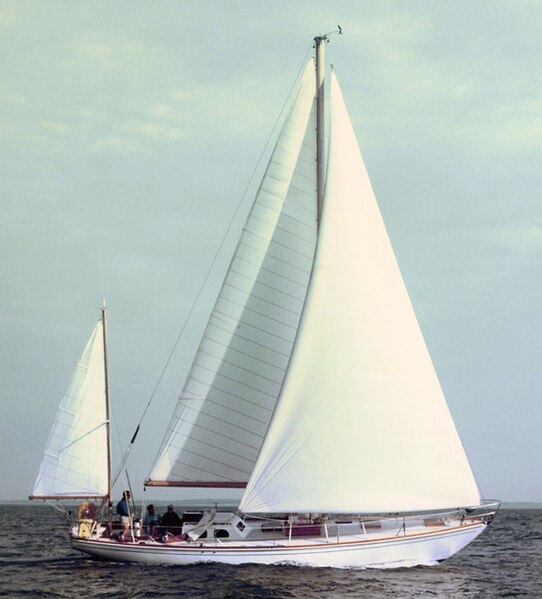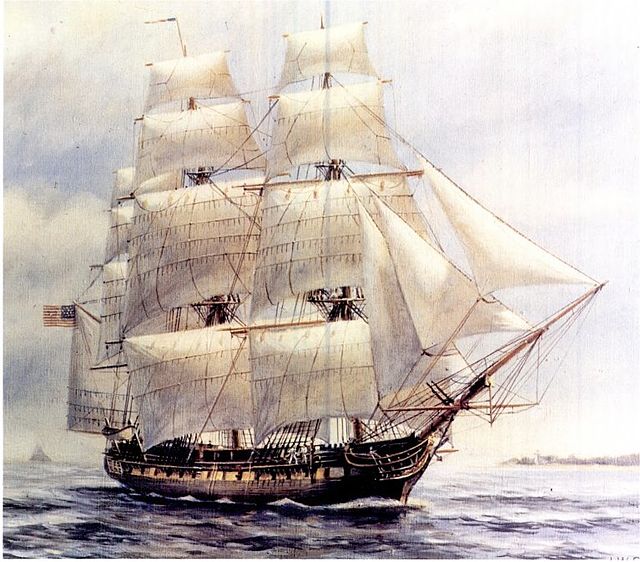Sail components include the features that define a sail's shape and function, plus its constituent parts from which it is manufactured. A sail may be classified in a variety of ways, including by its orientation to the vessel and its shape,. Sails are typically constructed out of flexible material that is shaped by various means, while in use, to offer an appropriate airfoil, according to the strength and apparent direction of the wind. A variety of features and fittings allow the sail to be attached to lines and spars.
The Russian sail training ship Kruzenshtern has triangular jibs at the bow, square sails on three masts, and a quadrilateral gaff-rigged sail at the stern.
Yacht flying a triangular, symmetric spinnaker with tri-radial construction—panels radiating from all three corners.
Bermuda-rigged Yawl with triangular jib and main and mizzen sails with cross-cut construction—parallel panels, sewn together.
Dhow with triangular lateen sail.
A sail is a tensile structure, which is made from fabric or other membrane materials, that uses wind power to propel sailing craft, including sailing ships, sailboats, windsurfers, ice boats, and even sail-powered land vehicles. Sails may be made from a combination of woven materials—including canvas or polyester cloth, laminated membranes or bonded filaments, usually in a three- or four-sided shape.
Square rigged frigate
Bermuda-rigged yawl.
Sailing hydrofoil catamaran with wingsail.
Egyptian sailing ship, ca. 1422–1411 BCE







